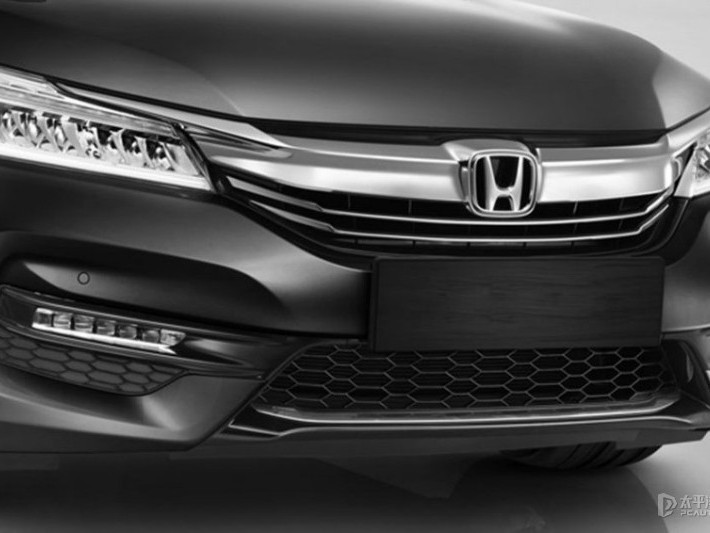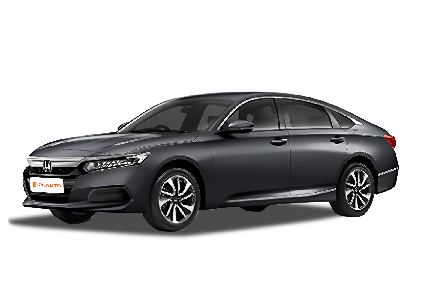Q
How to turn on cruise control on Honda Accord 2023?
To activate Adaptive Cruise Control on the 2023 Honda Accord, first make sure the vehicle is started and traveling above 40 km/h. Then press the "MAIN" button on the right side of the steering wheel to power up the system—you’ll see a white cruise icon pop up on the dashboard. When you hit your desired speed, press the "SET/-" button to lock it in; the icon turns green, meaning cruise control is now active. To adjust speed, tap the "+" or "-" buttons for 1 km/h increments, or hold them down for 10 km/h jumps. If you need to pause, just tap the brake pedal or hit "CANCEL"; to resume, press "RES/+" to get back to your set speed.
It’s worth mentioning the 2023 Accord comes standard with Honda Sensing, which includes Lane Keeping Assist (LKAS). Flip that on too, and you’ll get a semi-autonomous driving feel—but keep your hands on the wheel and eyes on the road, okay? Also, Malaysia’s hot and rainy weather can mess with the radar sensor’s sensitivity, so give the sensor area in the front grille a regular wipe-down to keep things working smoothly. This system really takes the edge off on highways or in traffic, but remember: it’s not fully self-driving. You still gotta step in for sudden stuff.
Special Disclaimer: This content is published by users and does not represent the views or position of PCauto.
Related Q&A
Q
What is lane assist on Honda Accord 2023?
The Lane Assist system in the 2023 Honda Accord is an advanced driver-assist feature. It uses a camera to track the vehicle's position within the lane and provides gentle steering assistance or vibration alerts if you start to drift unintentionally, helping you stay centered. This is especially handy for Malaysia's highways or long drives, really cutting down on fatigue and boosting safety. It usually pairs with Adaptive Cruise Control (ACC) for a semi-autonomous driving feel, but you still need to keep your hands on the wheel and be ready to take over. Important to note, this isn't full self-driving—its performance depends on things like weather and how clear the lane markings are, so always stay focused. In the Malaysian market, you'll typically find this feature on higher-spec Accord models, working alongside other systems in the Honda Sensing suite like Collision Mitigation Braking System (CMBS) and Road Departure Mitigation (RDM) to give local drivers more comprehensive protection.
Q
Does the 2023 Honda Accord show tire pressure?
The 2023 Honda Accord does come with a Tire Pressure Monitoring System (TPMS) that shows real-time pressure readings for each tire. Drivers can check the specific numbers on the instrument cluster or center display screen. This feature is especially handy in Malaysia's hot climate and for long drives, since high temperatures can cause tire pressure to spike unexpectedly—keeping an eye on it helps prevent blowouts. Plus, the system usually warns you if the pressure gets too low or too high, prompting you to check the tires. For Malaysian users, regular pressure checks don't just boost safety; they also improve fuel efficiency and tire lifespan. It's a good idea to manually check the pressure at least once a month, especially when temperatures swing a lot. Make sure to adjust according to the recommended levels listed in the owner's manual or on the door jamb. If you notice frequent pressure issues, it might mean a leaky tire or a faulty sensor—best to head to an authorized service center to get it checked out.
Q
How do you auto start a Honda Accord 2023?
If the 2023 Honda Accord in the Malaysian market is equipped with remote start, it can be operated via the smart key or mobile app. Here's how: first press the lock button to ensure the doors are locked, then hold down the remote start button on the key (usually a circular arrow icon) for about 2 seconds. Once the engine starts, the air conditioning system will automatically activate to adjust the cabin temperature – super useful in hot weather. It's important to note that the vehicle needs to be in Park (P) and have sufficient fuel for a successful start. Some models may require activating the HondaLink mobile app and subscribing to relevant services first. For models not equipped with this feature as standard, it's recommended to have Honda authorized dealers install original accessories to ensure compatibility and avoid potential electrical risks from self-modification. Remote start technology has now become a common feature in mid-to-high-end models. Besides convenience, it also enhances driving comfort by pre-cooling or pre-heating the cabin. However, owners should be aware of Malaysia's laws regarding idling time; it's generally advised to get in and operate the vehicle within 10 minutes of remote starting, which is both environmentally friendly and compliant with regulations. Different brands implement this feature slightly differently, so it's advisable to read the owner's manual carefully or consult local Honda dealers for accurate information.
Q
How do I turn off traction control on my 2023 Honda Accord?
To turn off the Traction Control system on a 2023 Honda Accord, start the vehicle first. Then, look for the button labeled "VSA" or featuring the traction control icon, usually located on the left side of the steering wheel or on the center console. Press and hold it for about 3 seconds until "Traction Control Off" or a similar message appears on the dashboard. It's important to note that with traction control off, the vehicle may lose some stability on slippery roads or during hard acceleration. So, it's recommended to only turn it off temporarily for specific situations, like getting unstuck from mud or snow—keep it on for regular driving to stay safe. Malaysia's rainy climate means slippery roads are common, and traction control really helps prevent wheel spin and boost driving safety. If you're curious about other driver-assist features, like lane keeping or adaptive cruise control, check the owner's manual or ask a Honda authorized dealer for more details.
Q
Does your 2023 Honda Accord have anti-lock brakes?
The 2023 Honda Accord does come with an Anti-lock Braking System (ABS), which is one of the standard safety features in modern cars. It effectively prevents the wheels from locking up during emergency braking, helping drivers maintain steering control—something that’s especially crucial on Malaysia’s rainy, slippery roads. Beyond ABS, the 2023 Accord also packs Electronic Brakeforce Distribution (EBD) and Brake Assist (BA). These technologies work together to further boost braking performance and overall safety. In Malaysia, a lot of car buyers really care about these active safety features because they can significantly cut down accident risks in unexpected situations. The Honda Accord, being a popular midsize sedan, has always had a pretty comprehensive set of safety gear that meets major global safety standards, making it a solid choice for Malaysian families or business use. For safety-conscious consumers, getting to know a car’s braking system and other safety tech is a must—these features often make a big difference when it matters most.
Q
How to turn off parking sensors on Honda Accord 2023?
To turn off the parking sensors on a 2023 Honda Accord, press the "Parking Sensor" button near the center console (usually marked with a "P" and sound wave icon). The exact location might vary by trim level; some models require using the infotainment system—just go into Vehicle Settings and select "Driver Assist" or "Safety Features" to disable them. It's worth noting that Malaysia's hot and rainy weather can affect sensor sensitivity, so occasional false alerts are normal. We recommend regularly cleaning dirt or water spots off the sensor surfaces to keep them working their best. If you're getting frequent false triggers, reach out to a Honda Malaysia authorized service center. This isn't a malfunction—it's just how electronic systems behave in extreme environments. Other models like the Toyota Camry or Mazda 6 use similar setups, with slight differences in operation but the same basic principle. Temporarily disabling the sensors won't affect other safety features like the rearview camera or blind spot monitoring. The system will usually reset to default "on" when you restart the car, which is good for safety.
Q
How to turn off lane assist on 2023 Honda Accord?
To turn off the Lane Assist on the 2023 Honda Accord, you can use the buttons on the right side of the steering wheel to access the vehicle settings menu. Look for the "Driver Assist Systems" option, then select "Lane Keeping Assist" and switch it off. The exact steps might vary slightly depending on the vehicle's configuration or regional version, so it's best to check the owner's manual or consult a local Honda dealer in Malaysia for precise guidance. Lane Keeping Assist is part of Honda's Honda Sensing safety suite, which uses a camera to monitor lane lines and provides steering correction alerts if the vehicle drifts. It's handy for highways or long drives, but some drivers might prefer to turn it off manually on city roads or in special road conditions. Keep in mind that when you disable it, a notification icon usually appears on the dashboard, and the system might default to being on when you restart the car, so you'll need to repeat the process each time you want it off. In Malaysia, many new cars come with similar driver assist tech—different brands might have different operating logic, but the main goal is all about boosting driving safety. It's recommended that drivers use these features flexibly based on actual road conditions and personal habits.
Q
How do I turn off automatic braking on my 2023 Honda Accord?
To turn off the automatic braking on a 2023 Honda Accord, you can navigate to the vehicle settings menu, find the "Driver Assist Systems" option, then select "Collision Mitigation Braking System (CMBS)" and switch it off. Here's how: After starting the car, use the buttons on the right side of the steering wheel to access the instrument cluster menu. Choose "Vehicle Settings," go into "Safety Support," locate "Collision Mitigation Braking System," and select "Off." It's important to note that automatic braking is a crucial safety feature that effectively reduces collision risks. It's recommended to only turn it off temporarily in special situations and keep it enabled during regular driving for safety. For Malaysian drivers, the local rainy weather and complex traffic conditions make this feature even more vital—it can automatically intervene when the driver doesn't react in time, lowering accidents caused by poor visibility or sudden incidents. If you have questions about other driver assist features like lane keeping or adaptive cruise control, check the owner's manual or consult an authorized Honda dealer. They can provide more detailed operation guidance and technical support.
Q
How to turn off idle stop on Honda Accord 2023?
Here's how to turn off the Idle Stop function on the 2023 Honda Accord: After starting the vehicle, look for the button labeled "Idle Stop" (usually with a circular arrow icon) either below the center console or on the left side of the steering wheel. Press it to deactivate the feature, and you'll see the "Idle Stop Off" indicator light up on the dashboard. Just keep in mind that the system defaults to on every time you restart the car, so you'll need to do this each time. The Idle Stop technology is designed to cut fuel consumption and emissions, which is pretty handy for Malaysia's stop-and-go city traffic. But some drivers find the frequent starting and stopping a bit annoying in terms of comfort. If you keep it off long-term, you might notice a slight increase in fuel usage, so it's best to use it flexibly based on the actual traffic conditions. Honda has optimized the Accord's Idle Stop system, so it barely affects engine or starter longevity—no need to worry about durability issues. Plus, in Malaysia's hot weather, the system smartly checks the AC load and prioritizes keeping the cabin cool, so it still stays practical.
Q
How to turn off headlights in 2023 Honda Accord?
Turning off the headlights in the 2023 Honda Accord is super easy – just twist the light control knob on the left side of the steering wheel to the "OFF" position and they'll shut off completely. If your car has auto headlights (AUTO mode), you'll need to switch the knob from AUTO to OFF first. With Malaysia's rainy and foggy conditions, it's better to leave it in auto mode for safer driving. One thing to note: some models have the headlights stay on for a bit after you turn off the engine (follow-me-home feature) – totally normal, no need to worry. For Malaysian owners, it's also important to know that the daytime running lights (DRL) are designed to stay on permanently and can't be manually turned off – this is a feature to comply with EU safety regulations. Using your car's lighting system properly not only ensures driving safety but also helps avoid getting pulled over by traffic police during night checks for lighting issues. It's a good idea to regularly check the condition of your bulbs, especially before the rainy season hits, since the humid weather can easily cause fogging in the light assemblies or aging of the wiring.
Popular Cars
Model Year
Car Compare
Car Photo
Latest Q&A
Q
How much is 1 horsepower?
Horsepower (hp) is a unit of power that measures how much work a horse can do in one second—specifically, lifting 550 pounds one foot off the ground. In metric terms, that’s roughly 745.7 watts. The term was coined by engineer James Watt to compare steam engines to the workhorses they were replacing.
In cars, horsepower tells you how strong an engine is, but it’s not the whole story. Torque, weight, and drivetrain efficiency all shape how a car actually feels on the road. Also worth noting: there are slight variations in how horsepower is measured. For example, metric horsepower (PS) is about 0.986 hp, though the difference is negligible in everyday talk.
When shopping for a car, don’t just fixate on horsepower. Think about how you’ll use it. A small turbocharged engine might deliver better low-end torque for stop-and-go traffic, while a high-horsepower engine could be overkill for city driving. And if you’re looking at EVs, remember their power is often listed in kilowatts (kW)—where 1 kW equals about 1.34 hp. Knowing these conversions helps compare different powertrains more accurately.
Q
How to calculate main engine power?
The calculation of main engine power is usually based on the physical relationship between torque and RPM, with the formula being * * power (kW)=torque (Nm) x RPM ÷ 9549 * *, or * * horsepower (HP) in English units=torque (lb ft) x RPM ÷ 5252 * *. In actual measurement, manufacturers will collect data and draw power speed curves under specific operating conditions through engine bench testing, while commonly used calibration values by consumers (such as maximum power) are mostly theoretical peak values. It should be noted that the power on the wheels (the actual power transmitted to the wheels) may be lower than the engine output value due to factors such as transmission efficiency and transmission losses. This is also why modification enthusiasts often verify actual performance through chassis dynamometers. In addition, technologies such as turbocharging and variable valve timing can optimize combustion efficiency and indirectly improve power performance, while electric vehicles directly output instantaneous maximum torque through motor characteristics, and the power calculation logic is different from traditional internal combustion engines. If you have doubts about the specific vehicle model data, you can refer to the official technical manual or professional evaluation report.
Q
What does a 1.6 litre engine mean?
A 1.6-liter engine means the total displacement of all cylinders is 1.6 liters—in other words, the combined volume swept by the pistons from top to bottom dead center is 1,600 cubic centimeters. Generally, a larger displacement means more power, but it also leads to higher fuel consumption. Engines of this size are very common in the local market because they strike a good balance between performance and fuel efficiency, making them ideal for daily commuting and family use.
Displacement is one of the key indicators of engine performance, but real-world performance also depends on other technologies, like turbocharging, fuel injection systems, and variable valve timing. These can make engines of the same displacement produce different power outputs and efficiency levels. For example, some 1.6L turbocharged engines can deliver power close to a naturally aspirated 2.0L engine while being more fuel-efficient.
When choosing an engine, it’s not just about displacement—you should also consider your driving habits and needs. If you frequently drive long distances or at high speeds, a bigger engine might be preferable, while a smaller turbocharged unit could be the smarter choice for city driving.
Q
Is a 1.6 L engine good?
The 1.6L engine strikes a good balance for everyday driving. It delivers enough power for city commutes and occasional highway trips while maintaining decent fuel efficiency. Maintenance costs are reasonable too—a practical choice for family cars.
Naturally aspirated 1.6L engines are particularly reliable, with mature tech that prioritizes durability and low upkeep. If you want extra punch, turbocharged 1.6L variants can match the performance of some 2.0L naturally aspirated engines without sacrificing much fuel economy.
That said, your driving habits matter. Frequent long-distance drivers might find 1.6L a bit underwhelming, but it’s more than adequate for urban errands. Keep in mind, performance varies across brands—always test-drive before deciding.
Q
Is a 1.5 litre engine good?
Whether a 1.5L engine is right for you depends on your driving needs. For city commuting and daily errands, this displacement performs exceptionally well—it’s fuel-efficient, cheaper to maintain, and ideal for stop-and-go traffic. Plus, many modern 1.5L turbocharged engines now deliver power close to traditional 2.0L naturally aspirated ones, easily handling most family trips. If you’re mainly driving in urban areas with occasional highway runs, a 1.5L is plenty. But if you frequently haul heavy loads uphill or crave sharper throttle response, you might want to consider a larger engine. Keep in mind, though: advancements like optimized intake/exhaust systems and direct injection have given smaller turbo engines decent low-end torque, which is a big help in crawling traffic. So beyond displacement, pay attention to how the engine is tuned and what tech’s under the hood.
View MoreRelated News

Starting from RM 187,400! A Honda Accord with sufficient trunk capacity, would you consider it?
AshleyJul 19, 2024

With a budget of 90k, should I choose the Proton S70 or the Honda City?
JamesDec 23, 2025

Jaecoo J5 is about to launch, following Honda CR-V, Honda HR-V will also be challenged
RobertDec 19, 2025

The brand-new Honda Prelude is being sold at a markup in North America. Is this car really that popular?
Kevin WongDec 17, 2025

Honda and Red Bull's eight-year partnership comes to an end. Honda will start a collaboration with Aston Martin.
JamesDec 10, 2025
View More













 Cars
Cars




Pros
Cons